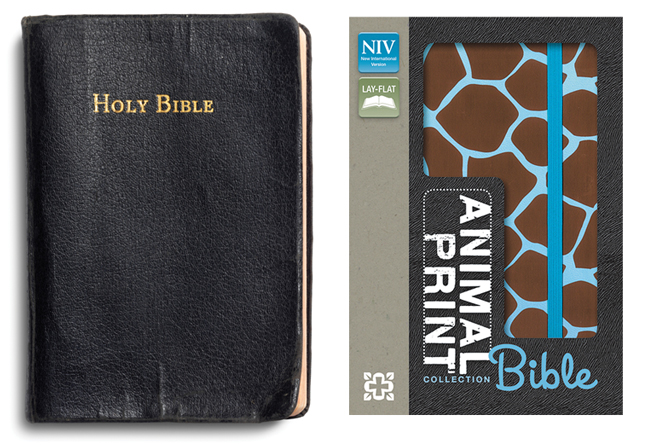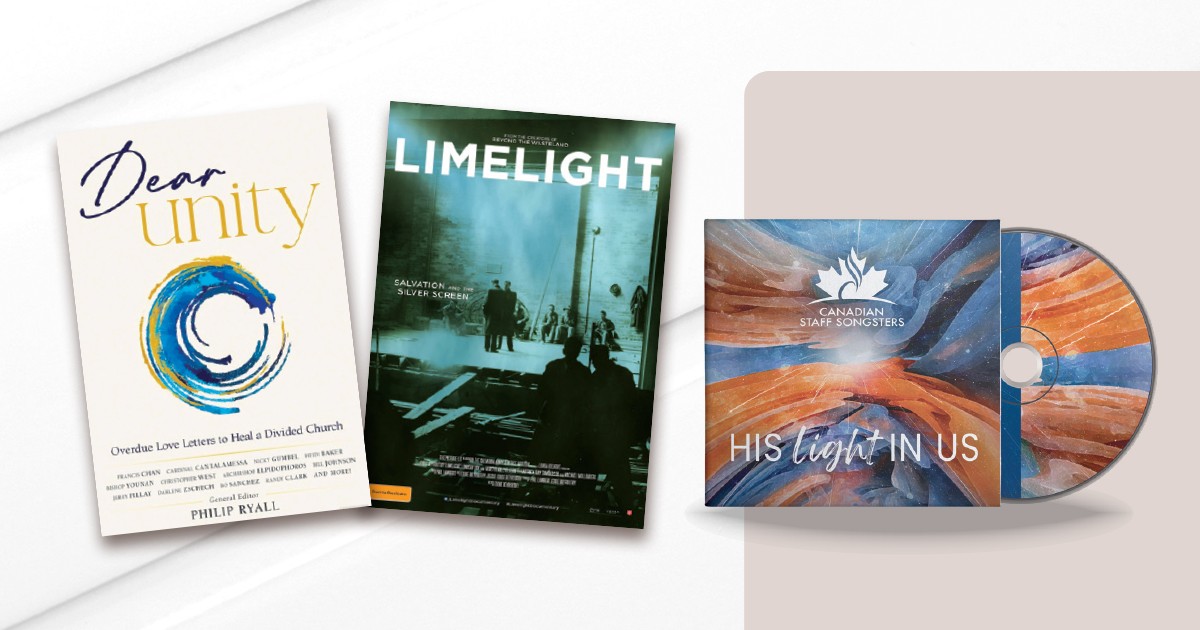"Three Stylish New Bibles Excite Readers about God's Word in a Whole New Way.”
The subject line of the e-mail caught my attention, so I opened it, wondering what I would find inside.
It was a press release from a leading Christian publisher, advertising three new animal-print Bibles. Aimed at “kids and teens who've always got their eyes on the latest trends,” the press release claimed the Bibles would be a “great option for fashionistas who are on the hunt for something new to flaunt at school.”
I have to admit I was a bit stunned. As the Cross Culture editor, I sift through press releases and product catalogues all the time, looking for interesting and faith-enriching items to include on these pages. These new Bibles would not be making the cut.
This product and its press release illustrate one of the great dangers of Christian consumer culture today. The idea that one would “flaunt” a Bible as a fashion statement is, frankly, antithetical to Christianity—a far cry from the example of Christ who, though God, humbled himself and “made himself nothing” (see Philippians 2:7-8). Being a Christian is clearly not about flaunting anything or trying to look “cool.”
If I give the marketers behind the animal-print Bibles the benefit of the doubt, I can appreciate their intent to bring the gospel to young readers. But there's a problem with making Christianity “fashionable”: fashions come and go. A faith rooted in fashion is shallow and disposable, something that can be discarded as easily as it is picked up.
Perhaps the animal-print Bible is an extreme example. But the idea that our Christianity needs to keep up with the “latest trends”—and the consumerist attitude that goes along with it—is disturbingly prevalent.
Typically, it manifests itself in two ways. First, there's the tendency to take something popular in the “secular” world and “Christianize” it, usually to make faith appear more palatable or hip.
Second, there's the tendency to apply the marketing machine to Christian products. So it's not enough to see the latest Christian movie—we've got to have the soundtrack, the companion book and the inspirational fridge magnet.
Essentially, it's the tendency to jump on the latest bandwagon without really stopping and thinking critically about why.
And that's really the key in all this—why. Many of these things aren't necessarily bad in themselves. But asking why can help us separate the wheat from the chaff.
Here are a few “why” questions to ask when contemplating a new purchase:
Why am I buying this? What is its purpose? To use the example of the animal-print Bibles again, am I buying it because I want to be trendy or cool, or because I want to better engage with the Word of God?
Equally important, is this product substantial enough to fulfil a higher purpose? Does it have real meat to it or is it feel-good cotton candy?
Could this money be better spent elsewhere? What if, instead of spending $24.99 on a leopard-print Bible, I gave that money to the food bank or Gifts of Hope? What would do the most good in the world? Is my faith something I consume, or is it something I do?
When I was a teen, my mom came home from the Christian bookstore one day with a Bible for me. It had a funky pink cover—definitely not as “cool” as a zebra print, but it had a certain mid-90s chic. But that's not why I picked it up and read it.
It was one of those life-application Bibles with short, topical essays and stories from other teens that helped me feel as if I could apply the Bible to my ordinary life. It wasn't trendy; it was timely. And, most importantly, it helped me discover the gospel—a timeless message that transcends all trends.
The subject line of the e-mail caught my attention, so I opened it, wondering what I would find inside.
It was a press release from a leading Christian publisher, advertising three new animal-print Bibles. Aimed at “kids and teens who've always got their eyes on the latest trends,” the press release claimed the Bibles would be a “great option for fashionistas who are on the hunt for something new to flaunt at school.”
I have to admit I was a bit stunned. As the Cross Culture editor, I sift through press releases and product catalogues all the time, looking for interesting and faith-enriching items to include on these pages. These new Bibles would not be making the cut.
This product and its press release illustrate one of the great dangers of Christian consumer culture today. The idea that one would “flaunt” a Bible as a fashion statement is, frankly, antithetical to Christianity—a far cry from the example of Christ who, though God, humbled himself and “made himself nothing” (see Philippians 2:7-8). Being a Christian is clearly not about flaunting anything or trying to look “cool.”
If I give the marketers behind the animal-print Bibles the benefit of the doubt, I can appreciate their intent to bring the gospel to young readers. But there's a problem with making Christianity “fashionable”: fashions come and go. A faith rooted in fashion is shallow and disposable, something that can be discarded as easily as it is picked up.
There's a problem with making Christianity “fashionable”: fashions come and go
Perhaps the animal-print Bible is an extreme example. But the idea that our Christianity needs to keep up with the “latest trends”—and the consumerist attitude that goes along with it—is disturbingly prevalent.
Typically, it manifests itself in two ways. First, there's the tendency to take something popular in the “secular” world and “Christianize” it, usually to make faith appear more palatable or hip.
Second, there's the tendency to apply the marketing machine to Christian products. So it's not enough to see the latest Christian movie—we've got to have the soundtrack, the companion book and the inspirational fridge magnet.
Essentially, it's the tendency to jump on the latest bandwagon without really stopping and thinking critically about why.
And that's really the key in all this—why. Many of these things aren't necessarily bad in themselves. But asking why can help us separate the wheat from the chaff.
Here are a few “why” questions to ask when contemplating a new purchase:
Why am I buying this? What is its purpose? To use the example of the animal-print Bibles again, am I buying it because I want to be trendy or cool, or because I want to better engage with the Word of God?
Equally important, is this product substantial enough to fulfil a higher purpose? Does it have real meat to it or is it feel-good cotton candy?
Could this money be better spent elsewhere? What if, instead of spending $24.99 on a leopard-print Bible, I gave that money to the food bank or Gifts of Hope? What would do the most good in the world? Is my faith something I consume, or is it something I do?
When I was a teen, my mom came home from the Christian bookstore one day with a Bible for me. It had a funky pink cover—definitely not as “cool” as a zebra print, but it had a certain mid-90s chic. But that's not why I picked it up and read it.
It was one of those life-application Bibles with short, topical essays and stories from other teens that helped me feel as if I could apply the Bible to my ordinary life. It wasn't trendy; it was timely. And, most importantly, it helped me discover the gospel—a timeless message that transcends all trends.










Leave a Comment